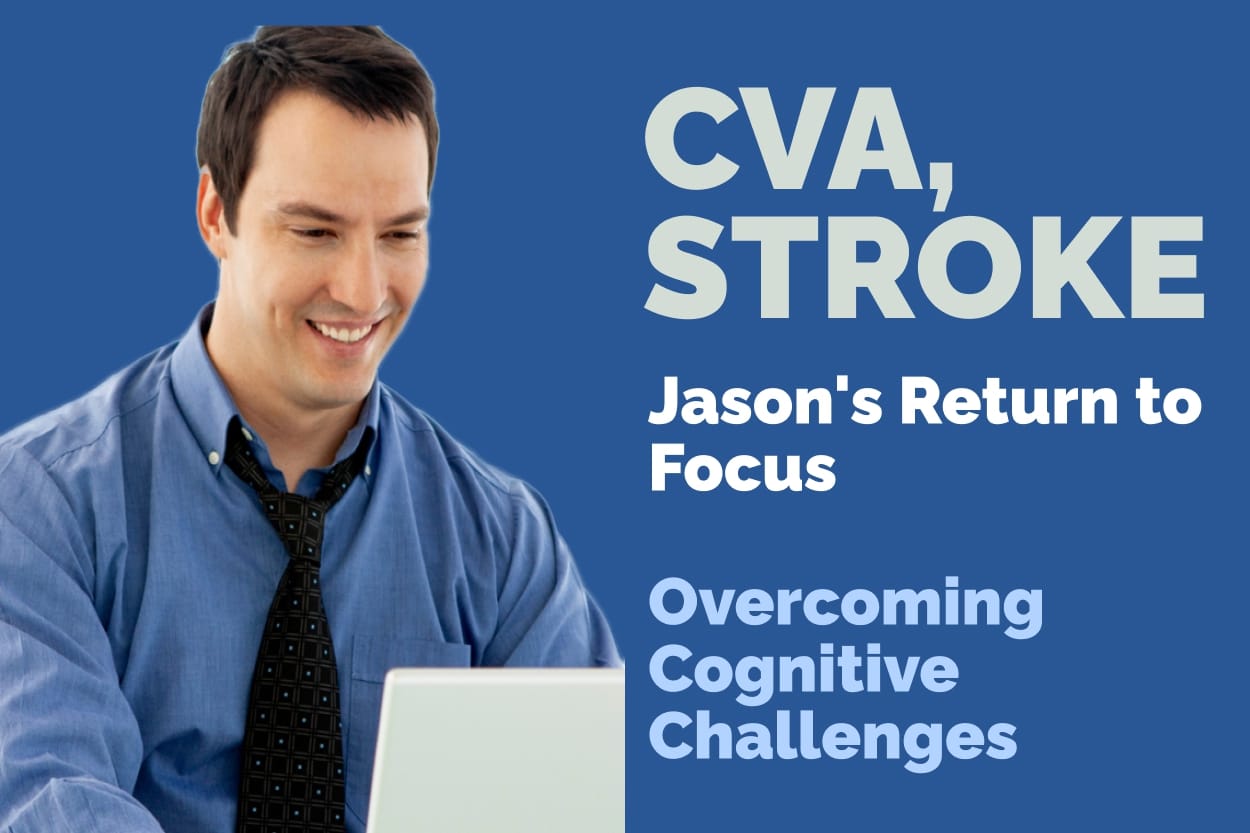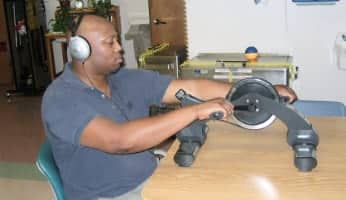Jason’s Return to Focus: Overcoming Cognitive Challenges with Interactive Metronome

Home - Testimonials - Adult Testimonials - Jason’s Return to Focus: Overcoming Cognitive Challenges with Interactive Metronome

Jason’s Return to Focus: Overcoming Cognitive Challenges with Interactive Metronome
Jason is a 33 year old independent male with degrees in Business and Finance working at a loan company.
In November 2007 he was admitted to the ER for mental status changes and confusion. Immediately he underwent an angiography where a four vessel cerebral arteriogram was performed to repair an AVM. (Arteriovenous Malformation). Fortunately the arteriogram performed resulted in a negative AVM aneurysm but instead Jason was determined to have a basal ganglia hemorrhage.
Rehabilitation and Early Challenges
Jason’s initial assessment cognitively placed him in the severe range for memory. Although he was able to state orientation information he had difficultly with short term and episodic information.
He was first admitted to the hospital November 16, 2007 then thought to be stable for rehabilitation 5 days later. Upon admission to rehab he demonstrated decreased concentration, confusion and decreased ability to stay on task. He was impulsive and appeared to become more confused at night. He remained in inpatient rehab for 16 days and was discharged for outpatient services.
He was discharged with CVA secondary to ventricular hemorrhage, history of hypertension and post stroke confusion with short term memory deficits.
Jason received outpatient services for 16 visits for cognitive therapy and 12 visits each of physical and occupational therapy. He completed a driver performance test and scored in the average range.
Workplace Difficulties and Further Therapy
He wanted to get back to work as a finance counselor 2 months after his hemorrhage.
Jason described his re-acquaintance with his projects and file system on his desk when he resumed his job duties. His coworkers noticed his difficulty recalling messages and meetings. His ability to take verbal messages and recall phone numbers and take notes were deficient. The coworkers noticed a significant difference in his job performance and described a desk full of sticky notes as reminders of phone numbers and follow up on clients.
After returning to work Jason’s Executive Finance Office recommended that he return for more therapy. He returned to outpatient therapy and received cognitive therapy with the use of Interactive Metronome. Jason described himself as realizing he had attention deficit in high school but worked through it with strategies while at Penn State University.
After reevaluating his executive functioning and attention shifting, Jason’s therapy focused on increasing vigilance. He continued for 21 sessions three times a week focusing on recalling names of familiar people, task vigilance, improving simultaneous capacity and use of compensatory memory strategies.
He was unable to recall 5 digits or 4 unrelated words immediately. Shift of attention by recalling and reversing 4 digits was also impaired. He was only 90% accurate to alternate attention with number and letter tasks.
Interactive Metronome Therapy
With the use of the IM his vigilance improved and became more proficient. He was required to pick up blocks in a basket by alternating red and blue blocks while performing an IM foot exercise at the same time.
During other exercises he was required to perform IM exercises with both hands or both feet while at the same time performing complex verbal tasks. For example he would be shown a playing card and be required to say out loud either a different suit or a different number from the one shown without interrupting his focus on his IM exercises.
Other automatic verbal responses were used such as counting backwards while he performed a rhythmic IM exercise. Balance was often addressed as he was positioned prone to perform an activity to match the IM Reference Tone with a hand movement on the foot pad.
Notable Improvements and Return to Normalcy
Overall simultaneous capacity improved. Upon reassessment his verbal attention improved and Jason could:
- immediately recall 5 numbers consistently.
- shift attention and reverse 5 numbers.
- recall a 12-13 word sentence.
- easily recall 4 and sometimes 5 unrelated words.
Jason resumed his work schedule and returned to his job in Finance stating how much more focused and successful he was.
Eileen Stack McLaughlin, M.A. C.C.C.- SLP
HealthSouth Florence- Florence, SC




